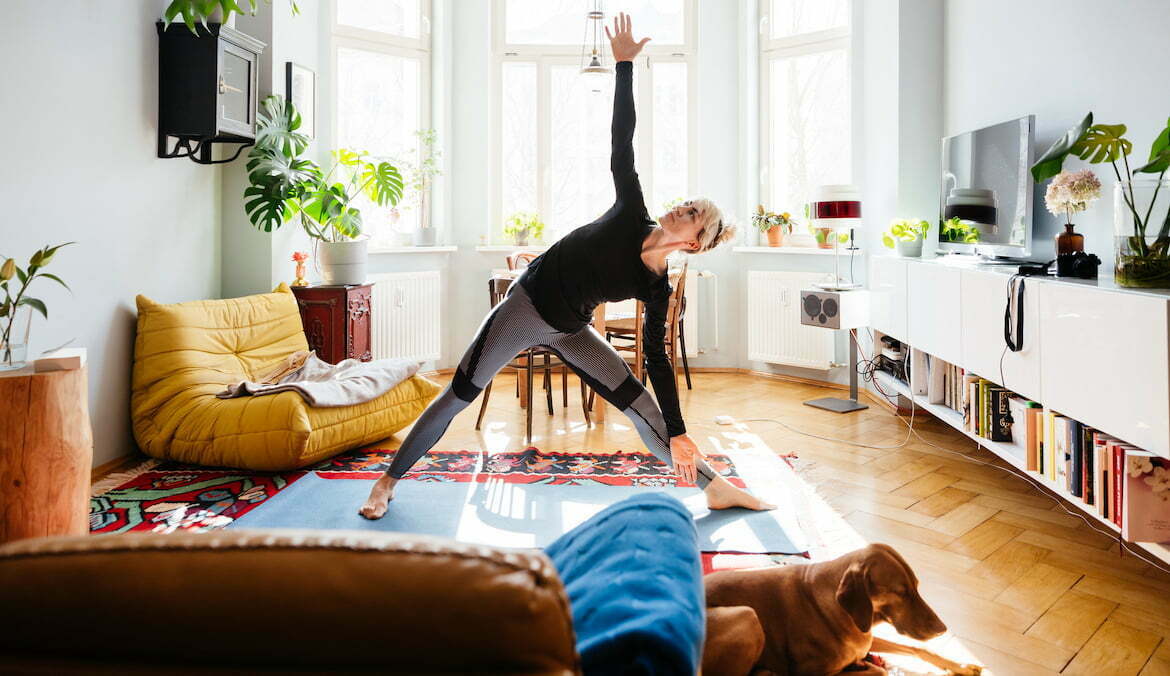You’re stressed out, don’t sleep well, and feel like life is dragging you down. You want to work out, but when you do, it makes you anxious and makes your body feel heavy. In fact, you don’t usually feel the high that everyone else seems to get from working out.
But everyone tells you that a good sweat is the best, right? People who mean well and self-help books say that feeling that burn will make you feel better.
The truth is, though, that a workout that gets your heart rate up can sometimes turn into a source of stress and do more harm than good for your health.
I’m very familiar with it. When I was in my early 20s, it was fun for me to work out at gyms and teach classes with a lot of energy and a little sweat. But after a few years, I got sick over and over again. I didn’t have enough energy to get through my sessions, and I started to feel anxious, irritable, and have muscle pain that wouldn’t go away.
Since I joined my first gym when I was 14, I’ve spent a lot of my life moving to feel better. No matter what was going on, it always made me feel good and gave me the energy I needed to keep up with life. But by the time I was in my mid-20s, I had used up all of my energy, was overtrained, and had worn myself out emotionally, physically, and mentally.
I realized I needed to change the way I lived. So I started getting the most out of my sleep and eating better and less. And, most importantly, I made sure I was doing a good mix of different kinds of exercise.
You see, I wanted to keep moving. I was unable to do any. But I had to pay attention to what my body was saying. So that my nervous system could get a chance to heal,
I stopped doing what I thought of as traditional gym workouts (cardio, strength training, core work, weights, circuits, and boxing) and started doing Pilates, yoga, stretching, and meditation instead.
Now that I’m 40, I know how to exercise in a way that will last. I no longer try to keep up with my friends like I used to. Instead, I start each week with a new level of honor of my own. I look at my time, my business, my guys, and my skills to see how much energy I have. And I understand. I push where I can, but when I need to, I pull back. I always move with purpose, concentration, and control.
A typical week for me now includes (at most) five 30-minute sessions: two Pilates-based full-body strength routines using bodyweight and resistance bands, two low-impact cardio sessions like low-impact HIIT or a brisk walk outside, and a full-body weight session, plus a short 15-minute yoga-based stretching/mindfulness session that includes meditation most days.
Exercise is now a fun part of my life that changes all the time. It’s not a burden or stress, but it’s always a good thing to hear, even when things are hard. Because I’ve decided that at 40, I don’t have and don’t want the strength to fight to push myself when it’s just not happening. “Working out” is not worth my health and happiness.
I’ve found that you’re more likely to reach your fitness goals when you learn to balance more intense workouts with lighter, more controlled movements. This is because you give your body time to recover. And when you pay attention to parts of your fitness that you may not have thought about before, like your nervous system or the effects of hormonal changes, you start to see things in a new way.
My ideas about exercise have changed over time, and now I see fitness as a way to connect my body and mind. This method has helped me and many of my clients relax, so I can work out smarter, not harder. We put in a lot of work, but we’re building a great base and taking care of our health every step of the way.
The good thing is that you should always ask yourself, “How will I feel after doing this?” “Will this really help my health, energy, and body?” Keeping up with your fitness should help you get rid of a lot of stress.
The idea that you have to work hard or go home is old school. Respecting that, because of the pelvic floor shift, it may be best to do things with a little less force. You can get stronger by cutting your 60-minute workouts down to a balanced 20- or 30-minute routine a few days a week. (Even science agrees with this.)
Think about how you feel after different kinds of exercise and if the balance of your workouts is something you can enjoy for the next 10, 20, 30, or more years.
Try this easy flow the next time you want to take it easy:







